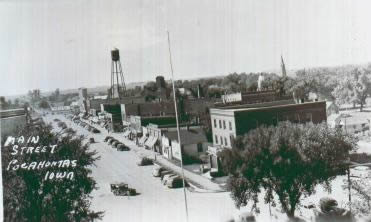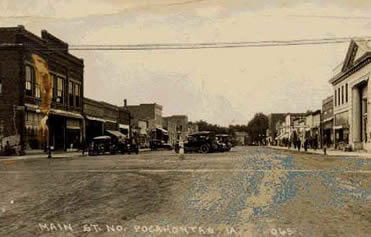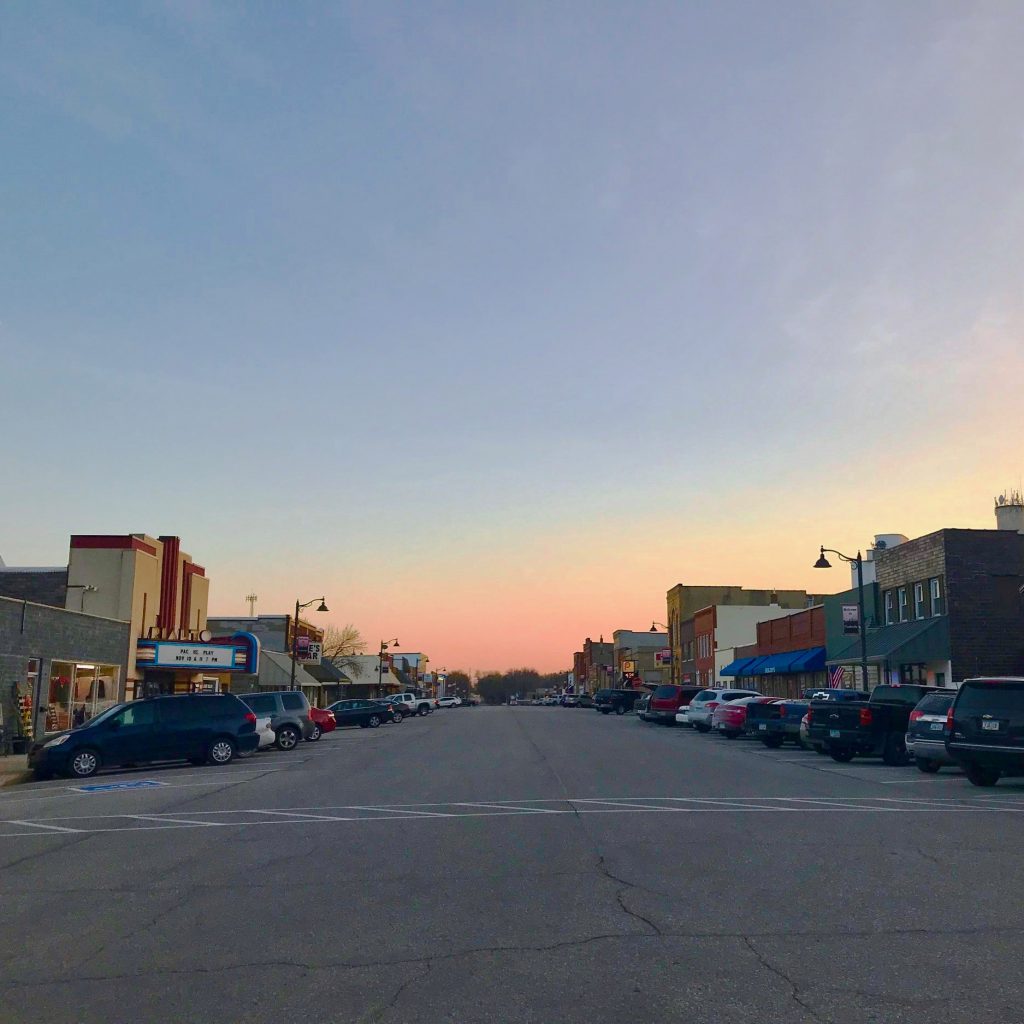
The City of Pocahontas is located at the geographical center of Pocahontas County. In the beginning, the land was owned by Warrick and Buelah Price of Cleveland, Ohio. On November 4, 1870, they had it surveyed and platted and arranged the lots, blocks, avenues, streets and alleys as they appear in the original survey.
The plat which included one hundred acres, was called the Village of Pocahontas Center. It was surveyedby Fred Hess and approved by Judge J.M. Snyder of the circuit court at Humboldt on November 9, 1870. They set apart for public use as a courthouse site and public park, a rectangular plat 600×800 feet in the center of the plat, provided the people of Pocahontas County should accept it for that purpose within five years, which they did on June 8, 1875.
The naming of Pocahontas streets was unique. Originally Main Street was named Buelah Avenue after Mrs. Price; the east and west street Warrick Avenue; the four diagonal street after their daughters: Elizabeth, Laura, Otterlia, and Theo. The present Third and Fifth Avenues were named in honor of their sons, William and John.
The county, and subsequently the city, are named after the most famous woman in early American history, Pocahontas (a nickname meaning something like “Frisky” – her real name was Matowka). “. . . blessed Pocahontas, the great King’s daughter of Virginia, oft saved my life,” wrote Captain John Smith, and apparently she oft saved the Virginia colony of Jamestown, a great friend of the English, she supplied their wants and filled their jars with corn. Other geographical names in the county related to Pocahontas are the City of Rolfe, Powhatan Township, and the City of Varina, named for her home in England.

At the time the Village of Pocahontas Center was platted there was not a resident, tree or sign of any improvement in the township. Warrick Price employed Hess & Behring, real estate agents at Fort Dodge, to look after and dispose of his lands in this county, and they, in the fall of 1871 erected a small office with two rooms, south of the courthouse square.
In March, 1872, Wenzel Hubel of Fort Dodge, purchased the office and ten acres of ground as a home for himself, wife and four children – William, Mary, Annie and Cedora – and to him and his family has been accorded the honor of being the first permanent residents of Pocahontas.
An election was held May 6, 1892, to incorporate the town. “Center” was dropped from the name after incorporation. W.C. Ralston was elected the first mayor on June 13, 1892. Main street sidewalk planning began the same year. Milt Burckwalter laid the first sidewalk. In 1896 Burckwalter put in a small electric plant.
Entertainment included a dancing club, athletic club, literary circle and church sponsored activities. The first commencement exercises were held June 2, 1898, with two graduates, Mae Anne Bollard and Inez Neola Byerly.

The Pocahontas Fire Department was organized in the the early 1900s. Almost unanimous approval was given when a waterworks was voted August 19, 1901. The Pocahontas Light, Heat, and Power Company was completed in 1901 and the railroad came in 1900.
More recent projects include remodeling the public library; a new aquatic center with a 186 foot long waterslide; addition to the hospital and medical clinic; underground electrical system, park improvements, and renovation of the Rialto Theater.

